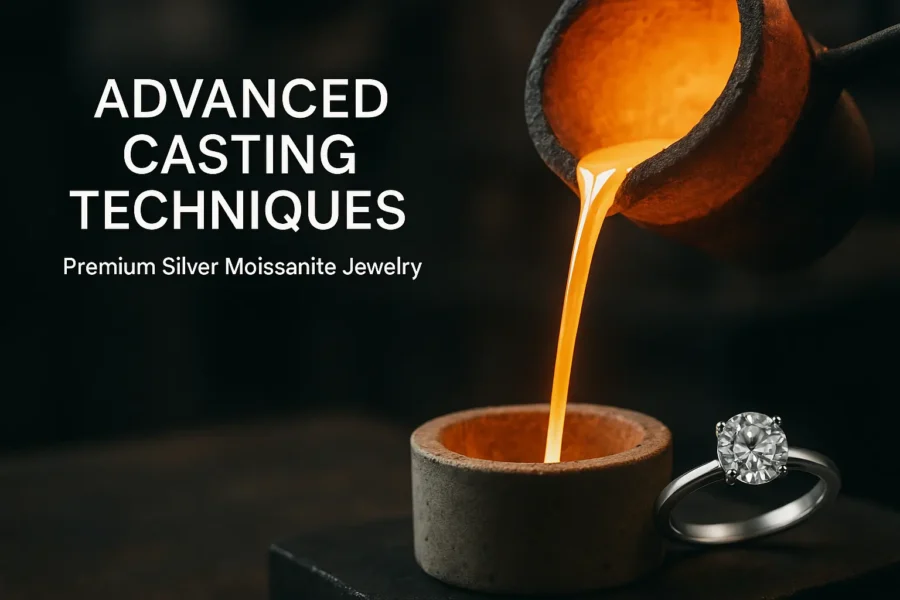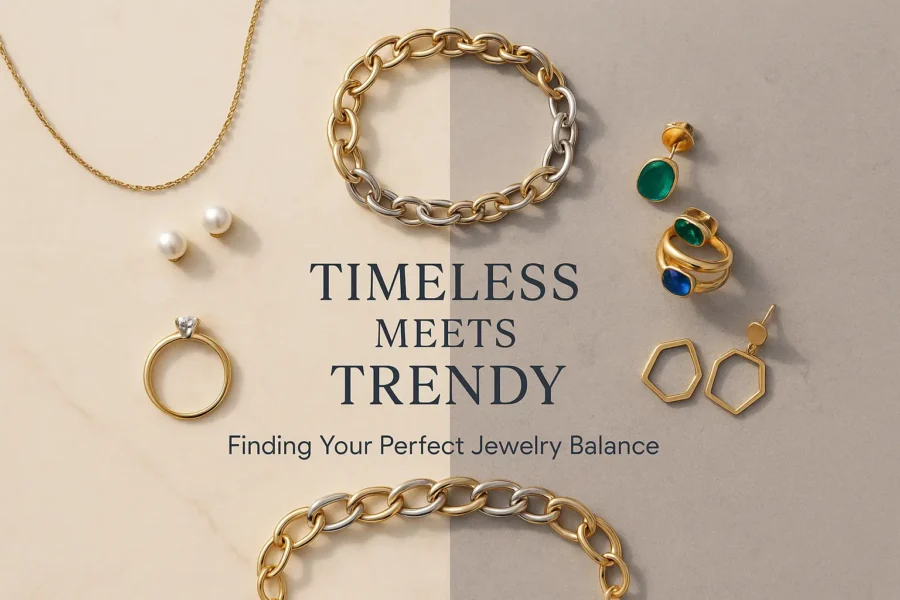Moissanites: Bridging Brilliance and Durability in Gemstones
Moissanites, known by various names such as Mozan stone and scientifically labeled as synthetic Moissanites, stands as a testament to human ingenuity in crafting high-quality artificial gemstones. Its allure lies not only in its stunning appearance but also in its exceptional hardness, making it a formidable contender in the world of gemstones. Let’s delve into the intricate details that set Mozanite apart, exploring its composition, optical properties, comparisons with diamond, and the nuanced factors contributing to its distinctiveness.
Composition and Optical Properties
The chemical composition of synthetic moissanite is silicon carbide (SiC), imparting significant hardness to this artificial gem. With a Mohs hardness of 9.25, Mozanite stands proudly as the second-hardest gemstone, trailing only behind the illustrious diamond. This hardness, a manifestation of resistance to penetration, places Mozanite in an esteemed category, showcasing its durability for various purposes.
Mozanite’s optical properties contribute to its captivating allure. Exhibiting a large dispersion of 0.104, surpassing that of diamond (0.044), Mozanite enthralls the observer with a vibrant, multicolored fire that is 2.5 times more intense than that of its diamond counterpart. The refractive index of Mozanite, ranging from 2.65 to 2.69, eclipses the value of diamond (2.42), endowing Mozanite with a lustrous brilliance akin to diamond’s adamantine allure.
Distinguishing Characteristics
While Mozanite may initially resemble moissanite diamond, a closer examination reveals distinctive traits that set it apart. The dispersion value and refractive index of Mozanite outshine diamond, showcasing its superior fire and brilliance. Professional testing with specialized instruments corroborates this, affirming Mozanite’s exceptional optical qualities.
The Mohs hardness scale further underscores Mozanite’s resilience, positioning it favorably among gemstones. It is essential to recognize that Mozanite’s hardness of 9.25 places it above many other gemstones, making it a compelling choice for those seeking durability without compromising on beauty.
Comparisons with moissanites Diamond
Beyond optical properties, Mozanites and diamond diverge in various aspects, offering consumers distinct choices based on preferences and priorities. Originating through a complex and risky process involving the cultivation of carbon and silicon minerals, Mozanite stands in stark contrast to diamonds, which form naturally underground through intricate geological processes.
Density differences between Mozanite (3.22) and diamond (3.52) impact their respective weights, despite comparable sizes. Mozanite’s slightly lower density can result in a lighter gemstone, offering a nuanced consideration for those who prioritize weight in their gemstone choices.
Both Mozanite and diamond share robust thermal conductivity, but Mozanite potentially exhibits electrical conductivity (around 80% exhibit conductivity), a trait absent in most diamonds except for the blue-gray type IIb diamonds.
Clarity considerations distinguish the two gemstones as well. Mozanite may show parallel white needle-like inclusions, but high-quality specimens are generally free of visible flaws. In contrast, diamonds often require a clarity grade of at least VVS1 at 10x magnification, emphasizing the stringent standards applied to natural diamonds.
Pricing Dynamics
A significant factor influencing consumer choices is the price discrepancy between Mozanite and diamond. The synthetic nature of Mozanite results in a lower price point, making it an accessible option for those seeking the aesthetic appeal of a diamond without the associated cost. The price of Mozanite, approximately 1% of a comparable diamond, reflects the economic realities of their distinct origins and production processes.
Mozanite’s artificial creation through laboratory experiments contrasts sharply with the natural formation of diamonds, involving exploration, diamond development, screening, cutting, polishing, and finishing. This dichotomy in origin contributes significantly to the pricing dynamics and shapes the consumer landscape for these gemstones.
Optical Distinctions
Examining the refractive index of Mozanite (2.648-2.691) reveals its superiority over diamond (2.417). While diamonds are singly refractive, Mozanite’s double refraction of 0.043 introduces a fascinating characteristic. When viewed through a 10x loupe, Mozanite may exhibit a doubling effect, emphasizing the importance of observing away from the optic axis to discern this trait.
Both Mozanite and diamond share an adamantine luster, a quality heavily influenced by their refractive indices and the quality of their polishing. Mozanite’s hexagonal crystal structure in the trigonal system imparts uniaxial positive optical properties, contributing to its generally colorless appearance.
Hydrophobic and Oleophilic Nature
Both Mozanite and diamond share a common vulnerability—they are hydrophobic and oleophilic, making them susceptible to oil and grease. Regular cleaning is recommended to maintain their luster, especially for individuals exposed to cooking fumes. This shared characteristic underscores the importance of proper care and maintenance for these precious gemstones.
In the intricate tapestry of gemstones, Mozanite and diamond emerge as distinct threads, each weaving its unique narrative. Mozanite’s synthetic genesis, remarkable hardness, optical brilliance, and economic accessibility present a compelling alternative to the natural allure of diamonds. While Mozanite and diamond share some superficial similarities, their differences in origin, optical properties, hardness, conductivity, clarity, and pricing offer consumers a diverse array of choices tailored to their preferences and values. Whether one is drawn to the timeless elegance of diamonds or the modern brilliance of Mozanite, the world of gemstones continues to captivate with its kaleidoscopic beauty and diversity.






